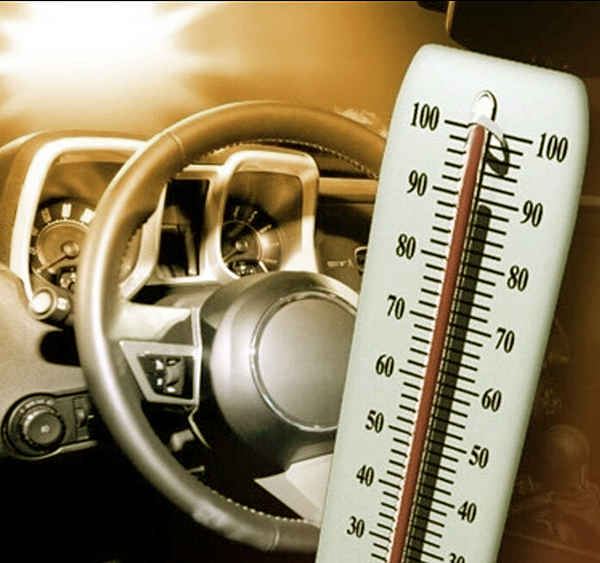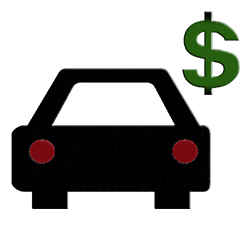Are white or silver cars actually significantly cooler than black or dark cars?
White or silver cars typically remain cooler than black or dark-colored cars, and the difference in temperature can be quite noticeable. Below is a detailed explanation of why this happens, examples, interesting facts, and the latest news on the topic.
Heat Absorption and Reflection

Dark colors, including black, absorb more sunlight than lighter colors. Black cars absorb almost all the light that hits them, converting it into heat. Conversely, white or silver cars reflect most of the sunlight, which significantly reduces heat absorption.
Example:
A black car parked in direct sunlight can become up to 20-30 degrees Fahrenheit hotter than a white or silver car. If the outside temperature is 85°F, the interior of a black car can reach up to 140°F, while a white car might only reach around 110°F.
Interesting Fact:
This principle is the same reason why people are advised to wear light-colored clothing in hot weather.
Impact on Air Conditioning Usage

Since darker cars get hotter faster, the air conditioning (A/C) system has to work harder to cool the interior. This increased A/C usage can lead to higher fuel consumption.
Example:
Studies have shown that a car’s A/C system can consume up to 18-20% more fuel in a dark car compared to a light-colored one. This not only impacts fuel efficiency but can also contribute to greater wear and tear on the vehicle’s A/C components.
Interesting Fact:
Over the lifetime of a car, the increased fuel usage due to more frequent A/C use can add up, making darker cars more expensive to operate in warm climates.
Comfort and Health Considerations

A cooler car interior is more comfortable, especially in hot climates. Overheated cars can also pose health risks, particularly for children and pets.
Example:
Leaving a pet in a black car on a sunny day can lead to dangerous heat levels inside the car within minutes, even with windows cracked. In contrast, a white car would heat up more slowly, reducing this risk somewhat, though leaving pets in any car under such conditions is not safe.
Interesting Fact:
Heatstroke can occur when the body’s temperature reaches 104°F or higher, making it vital to understand the risks associated with leaving anyone in a hot vehicle.
Resale Value Considerations

White and silver cars often have higher resale values, especially in warmer regions. This is partly because they are perceived as more comfortable in hot weather.
Example:
A study by iSeeCars.com found that white, silver, and gray cars tend to depreciate less over time compared to darker-colored cars. This is particularly true in states like Florida, Texas, and Arizona, where the heat is a significant factor for buyers.
Interesting Fact:
White has been the most popular car color in the United States for several years, which might contribute to its stronger resale value.
Environmental Impact
Vehicles with darker paint colors contribute more to the urban heat island effect, a phenomenon where urban areas become significantly warmer than their rural surroundings.
Example:
Cities with a high concentration of dark-colored vehicles and buildings can see temperature increases of up to 5°F. This not only affects energy consumption (e.g., more A/C use) but also exacerbates pollution and heat-related health issues.
Interesting Fact:
Some cities and states are considering policies to encourage or mandate lighter-colored vehicles and roofs to combat this effect.
Latest News and Research

News: A 2023 study by the Lawrence Berkeley National Laboratory in California showed that switching from a dark to a light-colored car can reduce the vehicle’s cabin temperature by up to 9°F. The study suggested that wider adoption of light-colored vehicles could significantly reduce the energy consumption associated with cooling cars, especially in urban areas.
Research: Ongoing research is exploring the development of “cool” paints that reflect infrared light while still maintaining a dark color. This could lead to darker cars that stay cooler, combining aesthetics with functionality.
Psychological and Aesthetic Considerations
People often choose car colors based on personal preference, brand image, or perceived status. Dark colors are frequently associated with luxury and elegance.

Example:
Despite the temperature drawbacks, many luxury car buyers prefer black cars for their sleek, sophisticated appearance. Car manufacturers often use black in their marketing for premium models.
Interesting Fact:
The perception of color can change with trends. In the 1980s, red was the most popular car color, but today, white dominates due to its association with modernity and cleanliness.
White or silver cars are indeed significantly cooler than black or dark-colored cars, and this difference has practical implications for comfort, fuel efficiency, and even resale value.
While the choice of car color is often personal, understanding the impact of color on temperature can help make more informed decisions, especially for those living in hot climates.












